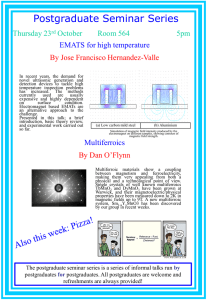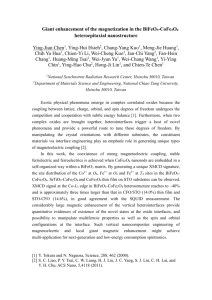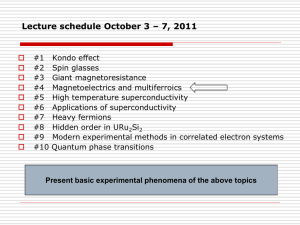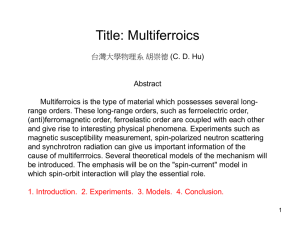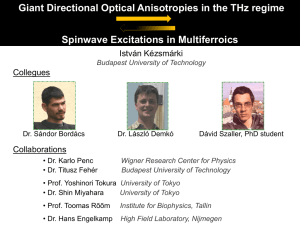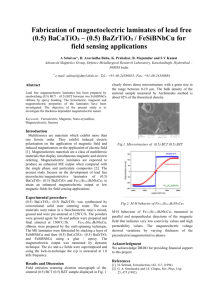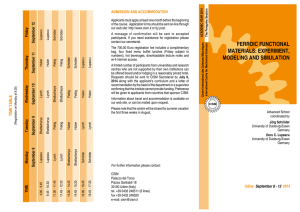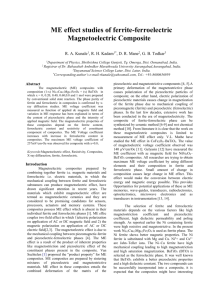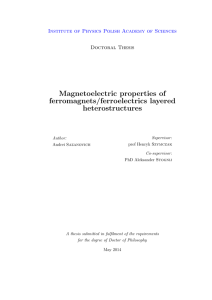Multiferroicity in GaFeO3 - Forschungszentrum Jülich
advertisement
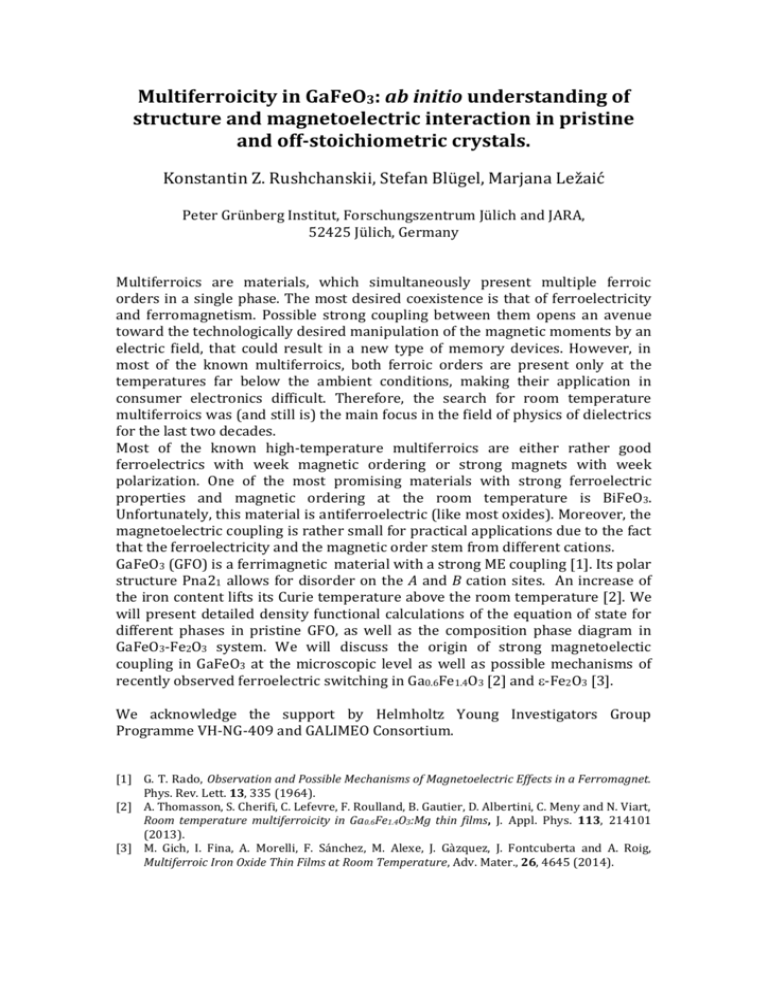
Multiferroicity in GaFeO3: ab initio understanding of structure and magnetoelectric interaction in pristine and off-stoichiometric crystals. Konstantin Z. Rushchanskii, Stefan Blügel, Marjana Ležaić Peter Grünberg Institut, Forschungszentrum Jülich and JARA, 52425 Jülich, Germany Multiferroics are materials, which simultaneously present multiple ferroic orders in a single phase. The most desired coexistence is that of ferroelectricity and ferromagnetism. Possible strong coupling between them opens an avenue toward the technologically desired manipulation of the magnetic moments by an electric field, that could result in a new type of memory devices. However, in most of the known multiferroics, both ferroic orders are present only at the temperatures far below the ambient conditions, making their application in consumer electronics difficult. Therefore, the search for room temperature multiferroics was (and still is) the main focus in the field of physics of dielectrics for the last two decades. Most of the known high-temperature multiferroics are either rather good ferroelectrics with week magnetic ordering or strong magnets with week polarization. One of the most promising materials with strong ferroelectric properties and magnetic ordering at the room temperature is BiFeO3. Unfortunately, this material is antiferroelectric (like most oxides). Moreover, the magnetoelectric coupling is rather small for practical applications due to the fact that the ferroelectricity and the magnetic order stem from different cations. GaFeO3 (GFO) is a ferrimagnetic material with a strong ME coupling [1]. Its polar structure Pna21 allows for disorder on the A and B cation sites. An increase of the iron content lifts its Curie temperature above the room temperature [2]. We will present detailed density functional calculations of the equation of state for different phases in pristine GFO, as well as the composition phase diagram in GaFeO3-Fe2O3 system. We will discuss the origin of strong magnetoelectic coupling in GaFeO3 at the microscopic level as well as possible mechanisms of recently observed ferroelectric switching in Ga0.6Fe1.4O3 [2] and -Fe2O3 [3]. We acknowledge the support by Helmholtz Young Investigators Group Programme VH-NG-409 and GALIMEO Consortium. [1] G. T. Rado, Observation and Possible Mechanisms of Magnetoelectric Effects in a Ferromagnet. Phys. Rev. Lett. 13, 335 (1964). [2] A. Thomasson, S. Cherifi, C. Lefevre, F. Roulland, B. Gautier, D. Albertini, C. Meny and N. Viart, Room temperature multiferroicity in Ga0.6Fe1.4O3:Mg thin films, J. Appl. Phys. 113, 214101 (2013). [3] M. Gich, I. Fina, A. Morelli, F. Sánchez, M. Alexe, J. Gàzquez, J. Fontcuberta and A. Roig, Multiferroic Iron Oxide Thin Films at Room Temperature, Adv. Mater., 26, 4645 (2014).
